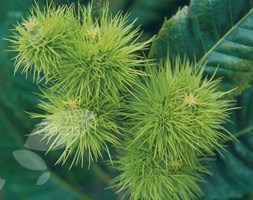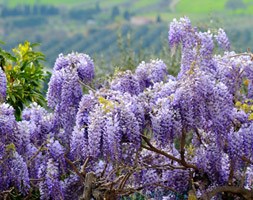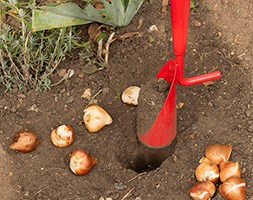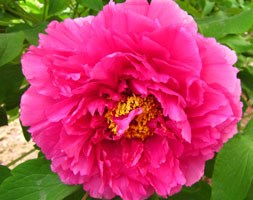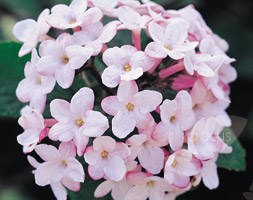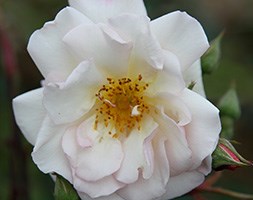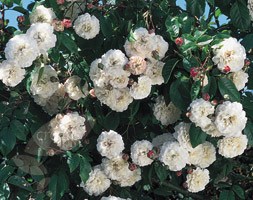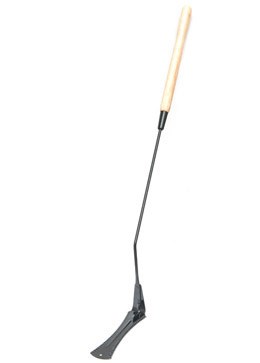New products at Crocus
by Sarah - October 24th, 2013.Filed under: Crocus, New Products.
New products today at Crocus
chestnut ‘Marhlac’ (chestnut) £34.95
Position: full sun or partial shade Soil: deep, loamy, well-drained soil with a slightly acidic pH Rate of growth: fast-growing Flowering period: April and May Hardiness: fully hardy If you like the idea of roasting chestnuts, then this handsome tree will provide you will bucket-fulls when it has had a chance to become established (usually after 5 or more years). It is an early to mid-season hybrid variety, which is a vigorous grower, and it will produce large, mahogany-red nuts, that store well after being harvested. It is partially self-fertile, so does not need a pollination partner, but it will produce an even bigger crop if there is another chestnut planted nearby. Garden care: Remove crossing or wayward branches when dormant in late winter or early spring. When roasting the nuts, make sure you prick them first to stop them ‘exploding’.
Wisteria sinensis (Chinese wisteria) £29.99
Position: full sun or light, dappled shade Soil: fertile, moist, well-drained soil Rate of growth: fast-growing Flowering period: May to June Flower colour: bluish-lilac Other features: velvety, green seed-pods in hot summers; all parts of the plant are harmful if ingested Hardiness: fully hardy Pendant clusters of fragrant, pea-like, bluish-lilac flowers in May and June, often followed by velvety-green seed-pods. This vigorous Chinese wisteria looks fabulous trained over a sunny wall or strong pergola. Renowned for its superior fragrance and flower-colour, the twining stems need careful pruning. All the Wisterias we sell are grafted, so will start to flower at a younger age than those grown from cuttings. Garden care: After planting prune back the leading shoot to 90cm (36in) above the ground. In the first growing season tie in lateral shoots and cut back sub-lateral shoots to two or three buds. During the first winter cut back laterals by one third and sub-laterals by two or three buds. Goes well with: Nepeta x faasenii, Pennisetum orientale, Lavandula augustifolia ‘Munstead’, Stachys byzantina, Artemisia ‘Powis Castle’, Eryngium giganteum
Hollow tine aerator £19.99
This hollow tine aerator gives deep aeration of compacted soil by removal of a soil core. It is easy to use and stimulates growth for a healthier lawn. It improves the condition of lawn areas prone to poor growth and will improve the lawns health and appearance. Measurements:
Long handled bulb planter £17.99
This long handled bulb planter is a contemporary take on a very useful and popular tool with most gardeners. With a cutting head made of sharp carbon steel it is slices through the ground with ease and removing the plug leaving a generous hole ready for the bulb to be planted. The long, strong, hardwood handle allows for less Measurements:
Paeonia Deep Pink (tree peony / tree paeony) £14.99
Position: full sun or partial shade Soil: fertile, moisture-retentive yet well-drained Rate of growth: vigorous Flowering period: April to May Hardiness: fully hardy Tree peonies are the Chinese national flower and they have been cultivated for more than 1,500 years. Their handsome foliage and enormous flowers, which can grow up to 15cm across, make them an excellent choice for a sunny (or lightly shaded) border. The vivid pink blooms that this one produces will mix well with purple and lialc, softer pinks and plum. This tree paeonia is between 1 and 2 years old. It arrived on our nursery in late winter as a bareroot plant and was immediately potted up into an 11cm pot. It may not have a well developed root system just yet (hence we describe them as bareroot), so you should not worry if the soil falls away when planting out. Garden care: Protect from cold winds and early morning sun. Support the branches of young trees with canes. In early spring apply a top-dressing of a balanced, slow release fertiliser around the base of the plant and mulch well with well-rotted garden compost or manure. If the plant shows signs of collapse or the leaves become spotty, this may be a symptom of peony botrytis. Remove affected leaves immediately. In the autumn, cut off all the foliage and dispose of it to prevent reinfection the following spring. The older stems of tree peonies have a tendency to become brittle and snap, so cut these back to the ground in autumn every two or three years.
Viburnum x burkwoodii ‘Park Farm Hybrid’ (burkwood viburnum) £14.99
Clusters of fragrant, dark pink flowers in April and May, fading to white, followed by red fruit. Some of the glossy, dark green leaves of this vigorous, evergreen viburnum turn orange and red in autumn. One of the best scented forms, it’s perfect for a partly shady border close to a house entrance or path. Position: full sun or partial shade Soil: moderately fertile, moist, well-drained soil Rate of growth: fast-growing Flowering period: April and May Flower colour: dark pink Other features: red fruits, ripening to black in autumn, which can cause a mild stomach ache if ingested Hardiness: fully hardy Garden care: Requires minimal pruning. Where necessary remove any misplaced or diseased branches in mid-summer after flowering Goes well with: Epimedium x perralchicum ‘Frohnleiten’, Euphorbia amygdaloides var. robbiae, Dryopteris filix-mas, Polygonatum odoratum, Astrantia major alba, Rosa rugosa var. alba
Rosa ‘Penelope’ (rose Penelope (shrub)) £12.99
Position: full sun Soil: fertile, humus-rich, moist, well-drained soil Rate of growth: average Flowering period: July to September Flower colour: creamy-pink Hardiness: fully hardy Large clusters of well-spaced, semi-double, scented, creamy-pink flowers that are produce from summer to autumn. This is a strong branching, healthy shrub that flowers continually all summer which are followed by coral-coloured hips in autumn. An outstanding rose for a sunny border that associates well with bronze foliaged plants. Garden care: Before planting shorten thick roots to 25cm (10in) and reduce top-growth to an outward-facing bud 8-15cm (3-6in) above ground-level. Plant during a frost-free spell, incorporating well-rotted organic matter and a balanced fertiliser into the planting hole. Ensure that the ‘bud union’ (the bulge at the base of the shoots) is at soil level. All our roses are field grown. In October/November they are dug up and potted. However, they will not produce any new roots until spring, so don’t be surprised if the compost falls away from the roots when winter planting. Some suppliers send out ‘bare root’ plants unpotted, but we don’t as it is easier to manage them on the nursery in pots.
Rosa ‘Felicite Perpetue’ (rose (rambler)) £12.99
Large clusters of pretty, primrose-scented, fully double, creamy-white flowers on long, slender stems in July and glossy, dark green leaves. The vigorous, semi-evergreen, old rambling rose is perfect for growing through a strong tree. One of the most reliable and adaptable rambling roses, it performs well in both sun and partial shade. Position: full sun or partial shade Soil: fertile, humus-rich, moist, well-drained soil Rate of growth: fast-growing Flowering period: July Flower colour: creamy-white Other features: excellent cut-flowers Hardiness: fully hardy Garden care: Before planting shorten thick roots to 25cm (10in) and reduce top-growth to an outward-facing bud 8-15cm (3-6in) above ground-level. Plant during a frost-free spell, incorporating well-rotted organic matter and a balanced fertiliser into the planting hole. Ensure that the ‘bud union’ (the bulge at the base of the shoots) is at soil level. Goes well with: Alchemilla mollis, Pulmonaria officinalis ‘Sissinghurst White’, Hesperis matronalis, Chionodoxa luciliae Gigantea Group, Allium sphaerocephalon, Clematis ‘Etoile Violette’ All our roses are field grown. In October/November they are dug up and potted. However, they will not produce any new roots until spring, so don’t be suprised if the compost falls away from the roots when winter planting. Some suppliers send out ‘bare root’ plants unpotted, but we don’t as it is easier to manage them on the nursery in pots.
Grass whip £10.99
This is a great tool for clearing over grown areas, long grass, nettles and brambles. It also has a long handle which makes it easy to use without bending. Measurements:







